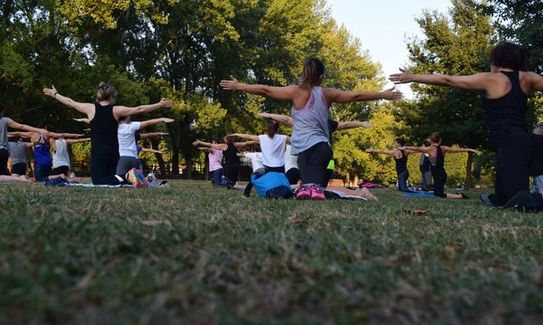When you have chronic neck pain, you may become less active than you used to be. There are lots of reasons why this can happen. Pain may keep you from doing some of the things you used to do leading to additional muscle weakness and neck pain. You may also be afraid that being active may cause your pain to worsen. Or you may feel discouraged or unable to find the energy to be active. If you feel this way, you’re not alone. Many people who live with chronic pain have these feelings from time to time. But being active is important not only for your neck but for your overall health.
Being Active Matters
It’s important to stay active even though you have neck pain. That’s because being active is good for your neck. Here’s why:
Lots of rest isn’t the answer. When you rest for long periods, your muscles can weaken and stiffen up. As a result, you may have more neck pain.
Being active in the right way does your neck good. Exercise protects your neck by strengthening muscles. Exercise can also reduce pain by relaxing muscles.
Being active keeps weight gain at bay. Extra weight can affect your posture. This strains the spine and can trigger neck pain or make existing pain worse.
Being active is a proven mood booster. Exercise releases brain chemicals that can help you feel better.
Choose Appropriate Activities
Make sure to talk with your chiropractic doctor before starting any new activities. Notall activities may be safe for you, especially if you have other health conditions. Your chiropractor will give you an idea of activities that will work for you. Here are a few ideas:
Gentle neck stretches help release tension and lessen pain.
Neck and upper back strengthening exercises reduce pain and improve posture.
Walking is an aerobic activity that increases heart and breathing rates and circulates blood to nourish all parts of the body, including the neck. When walking:
· Keep your body relaxed, not stiff.
· Practice good posture: chin tucked slightly in, crown of head up, ears aligned over shoulders.
Yoga poses may improve neck function and reduce pain by gently stretching and strengthening neck and shoulder muscles. It’s not for everyone with chronic neck pain, so be sure to discuss yoga with your chiropractor or physical therapist first. Then, follow these tips:
- Check local hospital wellness centers for classes. They’re more likely to be focused on easing neck strain and other chronic pain conditions.
- Talk to the instructor before you start. Let the instructor know about your chronic neck pain. Ask if the class is right for you. Find out if the instructor knows how to alter poses for people with neck pain.
Know your limits and respect your comfort levels. Don’t push it. Some ofthe most common yoga injuries are caused by over-stretching.
Stay Safe When You’re Active
• Start slowly.
• Warm up for at least 10 minutes before you start. Walk or do another favorite activity at low intensity.
• Increase the duration and intensity of your activities only when you are ready.
• Slow down activity when pain flare-ups hit, but return to being active as soon as you’re able.
Watch out for pain or tingling that spreads. Pain or tingling that moves from your neck down to your shoulder and/or arms is a sign to stop activity. Contact your physical therapist if you develop muscle weakness, numbness, have radiating or increasing pain, or have pain that concerns you.
Ask Dr. Jolley if there are any tests or treatments that might be helpful to use along with your current treatment plan. Other treatment options may include the following: physiotherapy, manipulation, dry needling, massage therapy, medicines, and MedX specific spinal testing and rehabilitation.
